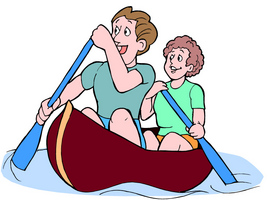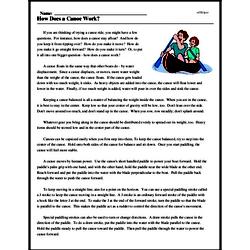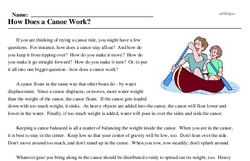How Does a Canoe Work?
If you are thinking of trying a canoe ride, you might have a few questions. For instance, how does a canoe stay afloat? And how do you keep it from tipping over? How do you make it move? How do you make it go straight forward? How do you make it turn? Or, to put it all into one bigger question - how does a canoe work?
A canoe floats in the same way that other boats do - by water displacement. Since a canoe displaces, or moves, more water weight than the weight of the canoe, the canoe floats. If the canoe gets loaded down with too much weight, it sinks. As heavy objects are added into the canoe, the canoe will float lower and lower in the water. Finally, if too much weight is added, water will pour in over the sides and sink the canoe.
Keeping a canoe balanced is all a matter of balancing the weight inside the canoe. When you are in the canoe, it is best to stay in the center. Keep low so that your center of gravity will be low, too. Don't lean over the side. Don't move around too much, and don't stand up in the canoe. When you row, row steadily; don't splash around.




